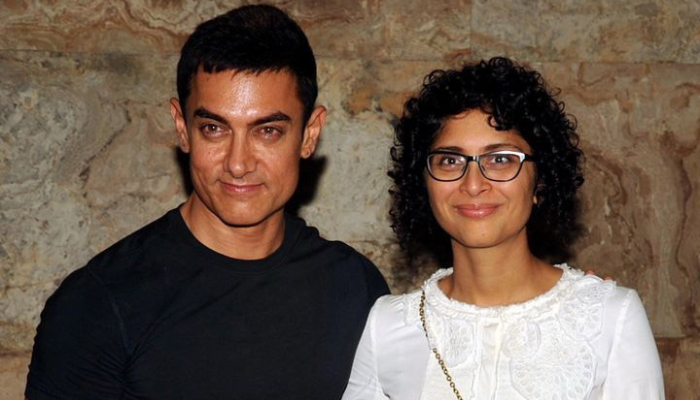Health
WORLD: THE REFUGEES AT EUROPE’S DOORSTEPS
字号+ Author:Smart News Source:Health 2025-01-14 02:06:25 I want to comment(0)
Since it began at the end of September, Israel’s invasion of Lebanon has heaped more misery on to a Middle East already overwhelmed by humanitarian catastrophe. Within Lebanon, as of 23 October 2024, more than 1.2 million people have fled their homes, and tens of thousands are now trying to flee abroad. From the European Union’s (EU) point of view, limited legal migration pathways, together with the presence of already increased migratory pressures, may well create a repeat of the 2015 refugee crisis. As these migration flows expand, Europe needs to balance immediate humanitarian needs with longer-term issues of refugee resettlement and integration. However, the continent’s current political landscape presents very difficult obstacles to making this happen. After the Arab Spring reached Syria in 2011, Lebanon became home to around 1.5 million Syrian refugees. Today, this movement is reversed, as the Israel-Lebanon conflict is pushing both Syrian refugees and Lebanese residents over the border into Syria. As of 21 October 2024, an estimated 425,000 people had fled Lebanon, crossing the nearest available border into Syria. Additionally, around 16,700 Lebanese residents have sought refuge in Iraq. Israel’s invasion of Lebanon has amplified the humanitarian crisis in the Middle East, forcing more and more people to migrate in order to find safety elsewhere… The Israel-Lebanon conflict is still in its early days, and many of these refugees are, for now, going wherever they can. However, they illustrate the volume of forced displacement already underway. In time, many will make their way towards Europe, resulting in greater migratory pressure on the EU, much like the refugee crisis of 2015, when over a million refugees entered Europe, mainly — though not exclusively — via Mediterranean routes. It seems that Europe did not see this coming. Only a few months ago, in May this year, the EU announced a €1 billion aid package for Lebanon, in order to confront the migration crisis and tackle it at its root. It is unlikely that this funding will be enough to stabilise the region, or to stem mass migration. Indeed, Lebanon, already on the verge of political collapse, may soon be unable to coordinate any meaningful migratory controls at all. In the broader context of an extremely volatile Middle East, this will heap pressure on to Europe. As the region’s instability deepens, European states can expect an additional number of migrants, and their claims for asylum, to reach them via countries such as Greece or Italy, both located on the front lines of migration routes. In purely material, economic terms, countries such as Germany have shown that it is possible to absorb huge numbers of refugees. Back in 2015, more than a million refugees, most of them Syrian, arrived in Germany, and many of them are now contributing to the country’s workforce. Syrians and their families have also helped boost German domestic consumption, and have bolstered an ageing population, demonstrating how migration can be a positive tool when managed effectively. However, today’s political panorama is different. Surging support for anti-immigration parties has created deeper social divisions over refugee acceptance. Public opinion has shifted toward demanding stricter border controls and reducing intake of migrants. This ongoing trend has only deepened since the 2024 European Parliament elections, when conservative and far-right parties gained considerable political ground. The EU’s indecisive response to the crisis is reflected in their weak policy efforts, such as a recent pledge to resettle 31,000 refugees in 2024 and 2025. This is a drop in the ocean — over 16 million refugees and displaced people are currently awaiting resettlement in the Middle East and North Africa (MENA). Whether the EU could take in all the refugees from Lebanon and other Middle Eastern conflicts is therefore a complicated question. While on paper it would be economically feasible — and undoubtedly beneficial in the long term — such a move seems politically out of reach. Instead, the EU’s approach to this ongoing crisis will be determined by its unity (or lack thereof) on a common policy. Germany’s Syrian refugee success story highlights the long-term potential for migration to strengthen the EU’s economy. However, political divisions make such policies politically problematic, as illustrated by Germany itself, which has recently reinstated controls on all of its land borders, in an effort to tighten migration controls. The EU’s newly launched Migration and Asylum Pact suggests measures such as relocation, and financial or operational support to member states. This approach aims to meet humanitarian demands, but also allows member states to safeguard their sovereignty and control. However, it also calls the coherence of the EU’s own values into question. By, in the Council’s own words, “helping with the deployment of reception centres”, the EU can enable the forced and sometimes unlawful sending of migrants to non-EU countries. Such measures also overlook what migration can offer a continent facing demographic headwinds — migrants can bridge gaps in labour markets, promote a culture of innovation, and provide a younger tax base to support ageing populations. However, to produce such results, the newly appointed commission will not only have to overcome political opposition, but also make sure that the policies it adopts realistically enable proper integration. Several key policy measures can help Europe manage the looming migration crisis. Expanding legal migration pathways — including resettlement programmes, humanitarian visas, and flexible work permits for Lebanese nationals — are key to easing migratory pressures. Additionally, improving conditions for refugees by increasing financial and logistical aid to Lebanon and its neighbours may help to slow migratory flows into Europe. Enhanced coordination between EU states — as difficult as it seems today — also is necessary to efficiently balance border control with respect for humanitarian principles. Lastly, while integration programmes should draw on successful models, such as Germany’s experience with Syrian refugees, the EU also needs to address the root causes of instability through diplomacy and development initiatives. Specifically, this means taking a strong diplomatic stance against Israel, and more generally overcoming the EU’s longstanding weakness and indecision when dealing with its neighbours in the MENA region. To quote one paper from 2010, the EU has long been “a payer not a player.” However, if this changes, the EU could potentially prevent millions of people from becoming refugees in the first place.
1.This site adheres to industry standards, and any reposted articles will clearly indicate the author and source;
 Related Articles
Related Articles-
Plan to rename Shadman Chowk after Bhagat Singh ‘scrapped’
2025-01-14 01:45
-
کیٹ مڈلٹن کی وہ جیل کی ملاقات جس نے سب کو حیران کر دیا
2025-01-14 01:31
-
اسکویڈ گیم سیزن 3: پہلی نظر میں کاسٹ میں خوفناک نیا اضافہ دکھائی دیا
2025-01-14 00:57
-
9 مئی کے فسادات: آئی ایس پی آر کا کہنا ہے کہ رحم کی اپیل پر 19 مجرموں کو معاف کردیا گیا ہے۔
2025-01-13 23:54
 User Reviews
User Reviews Recommended Reads
Recommended Reads Hot Information
Hot Information- PSL reveals Platinum Pool of overseas talent ahead of player draft
- میگھن مارکل نے کیٹ مڈلٹن کی جذباتی ویڈیو کے بعد شاہی خاندان کو پیغام بھیجا
- میگھن مارکل نے نئے خطاب سے طلاق کی قیاس آرائیوں کو ہوا دی
- کیننگٹن پیلس میں کیٹ مڈلٹن کے اہم واقعہ کے لیے اجلاس منعقد ہوا۔
- Urea prices to rise on gas tariff adjustment
- ہلاری برٹن نے بتایا کہ ون ٹری ہل کے ری بوٹ کو ابھی تک منظوری نہیں ملی ہے۔
- کیلی کیلس نے 2025ء میں دردناک لیکن ضروری فیصلے کے بارے میں بات کی
- 84 سال کی عمر میں کیٹی وومن سوشلائٹ جوسلین وائلڈین اسٹائن کا انتقال ہوگیا۔
- Three abducted in Taxila
 Abont US
Abont US
Follow our WhatasApp account to stay updated with the latest exciting content













